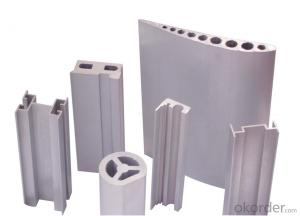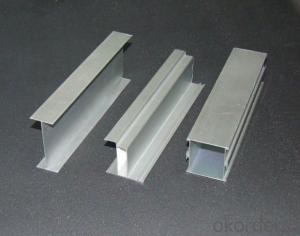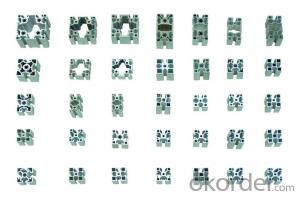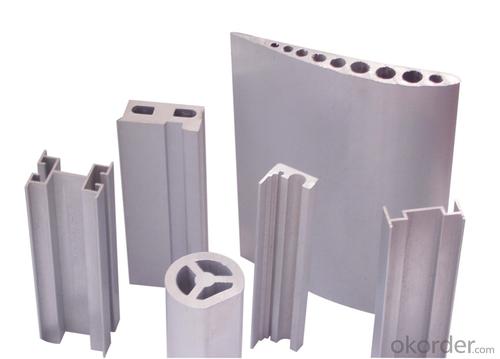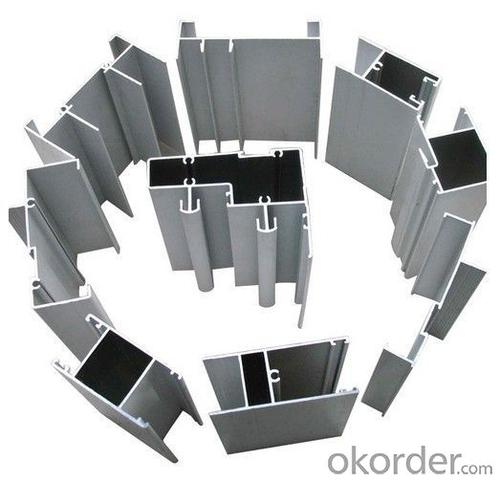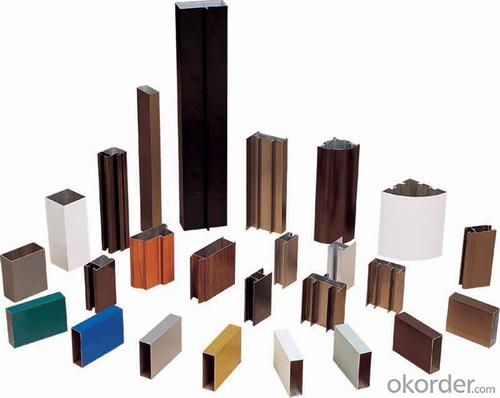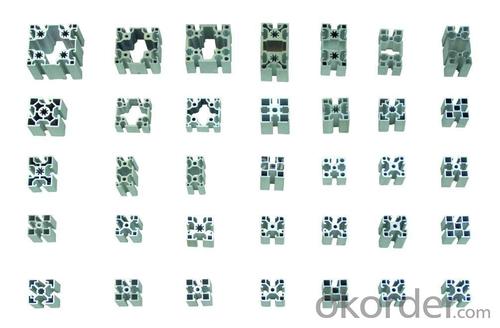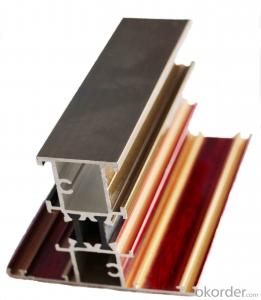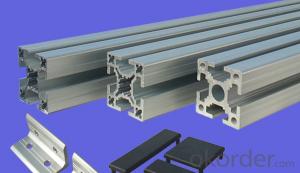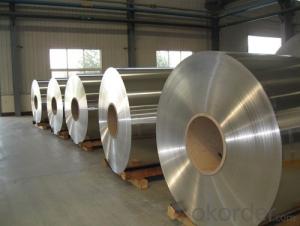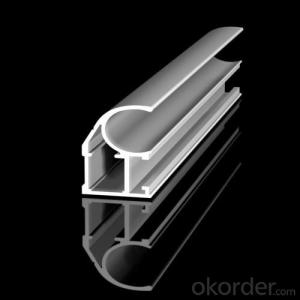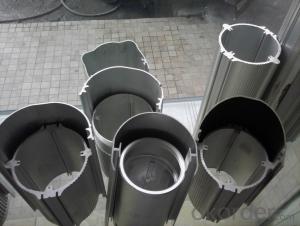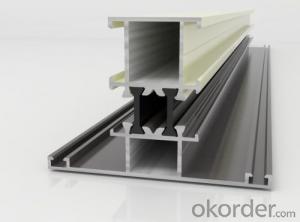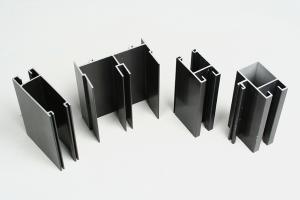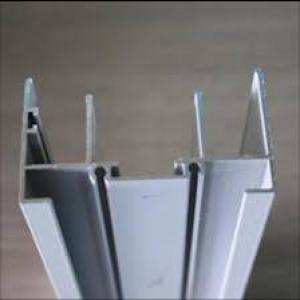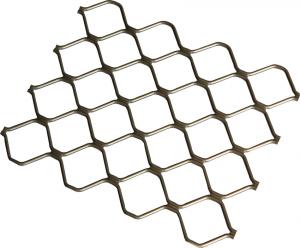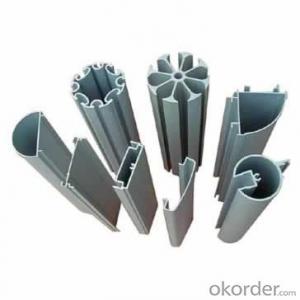China Anodized Aluminum Frame Profiles for Alu Profile Extrusion Sliding Window
- Loading Port:
- China Main Port
- Payment Terms:
- TT OR LC
- Min Order Qty:
- -
- Supply Capability:
- -
OKorder Service Pledge
OKorder Financial Service
You Might Also Like
Aluminium is a relatively soft, durable, lightweight, ductileand malleablemetalwith appearance ranging from silvery to dull gray, depending on the surfaceroughness. It is nonmagnetic and does not easily ignite. A fresh film ofaluminium serves as a good reflector (approximately 92%) of visible lightand an excellent reflector (as much as 98%) of medium and far infraredradiation. The yield strength of pure aluminium is 7–11 MPa,while aluminium alloys have yield strengths ranging from200 MPa to 600 MPa. Aluminium has about one-third the densityand stiffness of steel. It is easily machined,cast, drawn and extruded.
Aluminium alloys (or aluminum alloys; see spellingdifferences) are alloysin which aluminium(Al) is the predominant metal. The typical alloying elements are copper, magnesium,manganese,silicon,tin and zinc. There are twoprincipal classifications, namely casting alloys and wrought alloys, both of which are furthersubdivided into the categories heat-treatableand non-heat-treatable. About 85% of aluminium is used for wrought products,for example rolled plate, foils and extrusions.Cast aluminium alloys yield cost-effective products due to the low meltingpoint, although they generally have lower tensile strengthsthan wrought alloys. The most important cast aluminium alloy system is Al–Si,where the high levels of silicon (4.0–13%) contribute to give good castingcharacteristics. Aluminium alloys are widely used in engineering structures andcomponents where light weight or corrosion resistance is required
Features:
Material | Alloy 6063,6061,6005or according to customer’s choice |
Temper | T3, T4, T5, T6 |
Surface | Anodize, electrophoresis, powder coating, PVDF coating, wood grain painting, matted, etc. |
Length | Coating 6.5 meters, Anodizing 6.5 meters, Mill finish 5 meters |
Application | Industrial, electrical equipment(TV set, air conditioner, refrigerator, computer), decoration,construction, transportation |
Custom Made | We can package following with customer's request. |
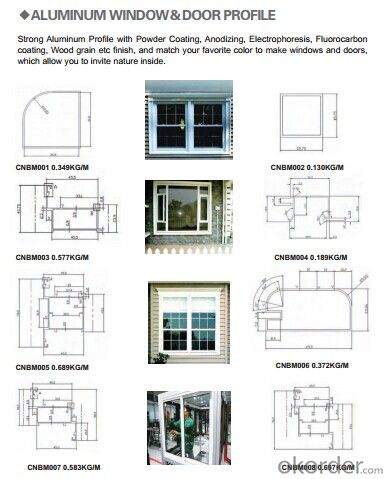
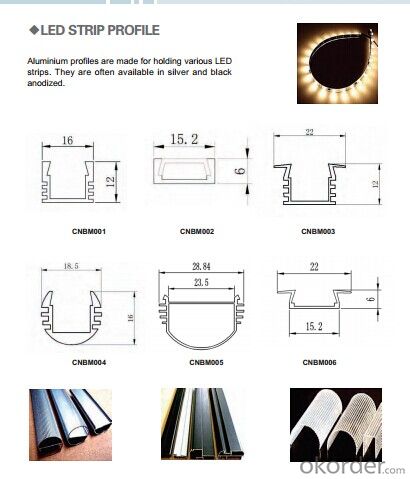
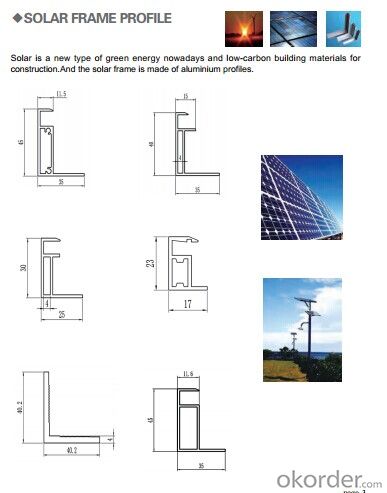
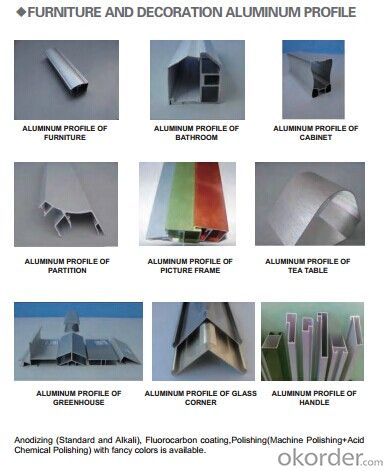
FAQ:
1. What is the form of payment?
Normally 30% TT, L/C at sight
2. Type of quotation?
FOB, CFR, CIF
3. Port of loading?
Shenzhen/Guangzhou port
4. Delivery time?
15-20 days after client’s deposit
- Q: What are the surface hardness properties of aluminum profiles?
- The surface hardness properties of aluminum profiles can vary depending on the specific alloy and treatment processes applied. Aluminum alloys are generally known for having a lower hardness compared to other metals such as steel. However, through various treatments, aluminum profiles can achieve improved surface hardness. One common treatment method is anodizing, which involves creating an oxide layer on the surface of the aluminum. This process not only enhances the corrosion resistance of the profiles but also increases their surface hardness. Anodized aluminum profiles can have a hardness ranging from 150 to 300 HV (Vickers hardness), depending on the thickness of the oxide layer. Another treatment process is hard coating, where a ceramic material such as aluminum oxide is applied to the surface of the profiles. This coating significantly enhances the hardness of the aluminum, providing a greater level of wear resistance. The hardness of hard-coated aluminum profiles can range from 400 to 600 HV or even higher. It is important to note that the specific hardness properties can vary depending on the alloy composition, surface treatment method, and the desired application of the aluminum profiles. Therefore, it is crucial to consult with manufacturers or suppliers to determine the appropriate hardness properties that best suit your specific needs.
- Q: What is the difference between 6063-T5 and 6061-T6 aluminum profiles?
- 6063 Aluminum Alloy belongs to Aluminum Alloy heat treatment, the main alloying elements as magnesium and silicon, the main strengthening phase is Mg2Si, with moderate strength, high corrosion resistance, no stress corrosion cracking tendency, good welding performance and corrosion resistance of weld zone constant etc.. The aluminum alloy has wide quenching range and low sensitivity to quenching temperature, and the thin-wall parts can be realized by wind quenching (strong wind cooling). Alloys are widely used in the frame and load-bearing panels of the construction and automotive industries. There is a relatively large tendency of over ageing in the welding process of this alloy. The direct reason is that the strengthening phase has been changed by the temperature.
- Q: This question asks for a list of various aluminum profiles that are utilized in the construction of building facades and cladding systems.
- <p>Aluminum profiles for facades and cladding systems come in various types, each serving specific purposes in construction. Common types include: 1. <strong>Aluminum Extrusions</strong>: Used for structural support and can be customized for specific design requirements. 2. <strong>Aluminum Channels</strong>: Often used for attaching panels or as a part of the support structure. 3. <strong>Aluminum Angles</strong>: Provide corner support and reinforcement. 4. <strong>Aluminum Flat Bars</strong>: Used for horizontal or vertical support in facade systems. 5. <strong>Aluminum Tubes</strong>: Can be used as a decorative element or for structural reinforcement. 6. <strong>Aluminum Louvers</strong>: Designed for sun shading and ventilation. 7. <strong>Aluminum Panels</strong>: Can be flat or profiled, used for the outer layer of the facade. 8. <strong>Aluminum Trims and Mouldings</strong>: Used for finishing and detailing around windows, doors, and edges. Each type is chosen based on the architectural design, structural requirements, and aesthetic preferences.</p>
- Q: Are there any specific safety precautions when working with aluminum profiles?
- Working with aluminum profiles requires specific safety precautions that should be considered. Here are some important precautions to keep in mind: 1. Personal Protective Equipment (PPE): It is vital to wear appropriate PPE, such as safety glasses, gloves, and protective clothing, to safeguard against potential injuries. Aluminum chips or shavings can cause cuts or abrasions. 2. Ventilation: Ensure that the working area has proper ventilation to prevent the accumulation of aluminum dust or fumes. Aluminum dust can be combustible, and inhaling aluminum fumes can result in respiratory problems. 3. Fire Safety: Due to its high flammability, it is crucial to have fire prevention measures in place. Keep a fire extinguisher nearby and avoid sparks or open flames near aluminum profiles. Choose non-sparking tools and be cautious of excessive heat during cutting or welding processes. 4. Handling and Storage: Aluminum profiles can be heavy, so it is important to use correct lifting techniques to avoid back or muscle injuries. Store aluminum profiles securely and in an organized manner to minimize the risk of tripping or falling. 5. Cutting and Machining: When cutting or machining aluminum profiles, use appropriate tools and techniques. Ensure that the material is securely clamped before any cutting operation to prevent movement and potential accidents. 6. Ergonomics: Prioritize maintaining good ergonomics while working with aluminum profiles to reduce the risk of repetitive strain injuries or musculoskeletal disorders. Utilize ergonomic tools or equipment to minimize strain on the body. 7. Training and Knowledge: It is essential to undergo proper training and acquire knowledge about working with aluminum profiles. Understand the specific properties of aluminum and the associated hazards to work safely and efficiently. By adhering to these safety precautions, the risk of accidents, injuries, or health hazards when working with aluminum profiles can be significantly reduced.
- Q: This question asks about the various types of aluminum profiles that are utilized in interior design applications.
- <p>Aluminum profiles are widely used in interior design for their strength, durability, and aesthetic appeal. Common types include: 1. Linear Profiles for creating sleek lines in furniture and architectural elements; 2. Structural Profiles for load-bearing structures like beams and columns; 3. Decorative Profiles for ornamental purposes, such as moldings and trims; 4. Frame Profiles for framing pictures, mirrors, and other wall-mounted items; 5. Slatwall Profiles for versatile display systems in retail spaces; 6. Handrail Profiles for stairways and balconies, ensuring safety and style; 7. Window and Door Profiles for modern, lightweight, and energy-efficient applications. Each type is chosen based on the specific design requirements and functional needs of the space.</p>
- Q: Can aluminum profiles be used for modular systems or frameworks?
- Yes, aluminum profiles can be used for modular systems or frameworks. Aluminum profiles are lightweight, strong, and have excellent structural integrity, making them an ideal choice for constructing modular systems or frameworks. These profiles can be easily assembled and disassembled, allowing for flexibility and adaptability in designing various structures. Additionally, aluminum profiles offer good corrosion resistance, making them suitable for both indoor and outdoor applications. They also provide a sleek and modern aesthetic appeal, making them popular in architectural and industrial design. Overall, aluminum profiles are a versatile and reliable option for creating modular systems or frameworks.
- Q: What are the potential environmental effects linked to the utilization of aluminum profiles?
- <p>Yes, there are environmental impacts associated with using aluminum profiles. The production process consumes significant energy, contributing to greenhouse gas emissions. Aluminum production also generates waste, including red mud, which can be harmful if not properly managed. However, aluminum is recyclable, and recycling reduces energy consumption and waste generation. The environmental impact can be mitigated by using recycled aluminum and adopting sustainable production practices.</p>
- Q: This question asks about the various thicknesses and grades of aluminum profiles that are specifically used for roofing purposes.
- <p>Aluminum profiles for roofing come in different thicknesses and grades, which determine their strength and suitability for various applications. Common thicknesses range from 0.5mm to 1.5mm, with 0.5mm and 0.6mm being the most common for residential roofing. For commercial and industrial applications, thicknesses of 0.8mm to 1.5mm are often used due to their increased load-bearing capacity. Grades of aluminum profiles are typically classified based on their alloy composition, with 1100, 3003, 5005, and 6061 being the most common. Each grade has different properties, such as corrosion resistance, formability, and strength, which make them suitable for specific roofing applications. For instance, 3003-grade aluminum is widely used for roofing due to its good formability and moderate strength. The choice of thickness and grade depends on the specific requirements of the roofing project, such as the expected load, environmental conditions, and aesthetic preferences.</p>
- Q: Are aluminum profiles resistant to chemicals and acids?
- Generally, aluminum profiles exhibit resistance to chemicals and acids due to their natural oxide layer, making them appropriate for diverse industrial uses. Nevertheless, the level of resistance may differ depending on the exact type of chemical or acid employed, as certain aggressive substances can still corrode aluminum. In these instances, one can enhance the resistance by applying supplementary protective coatings or surface treatments. To guarantee the utmost performance and durability, it is recommended to consult experts or manufacturers to ascertain the compatibility of aluminum profiles with specific chemicals or acids.
- Q: What are the dimensions of standard aluminum profiles?
- The dimensions of standard aluminum profiles can vary depending on the specific profile and its intended use. However, common dimensions for standard aluminum profiles typically range from a few millimeters to several inches in width and height, with lengths varying based on the manufacturer's specifications.
Send your message to us
China Anodized Aluminum Frame Profiles for Alu Profile Extrusion Sliding Window
- Loading Port:
- China Main Port
- Payment Terms:
- TT OR LC
- Min Order Qty:
- -
- Supply Capability:
- -
OKorder Service Pledge
OKorder Financial Service
Similar products
Hot products
Hot Searches
Related keywords
